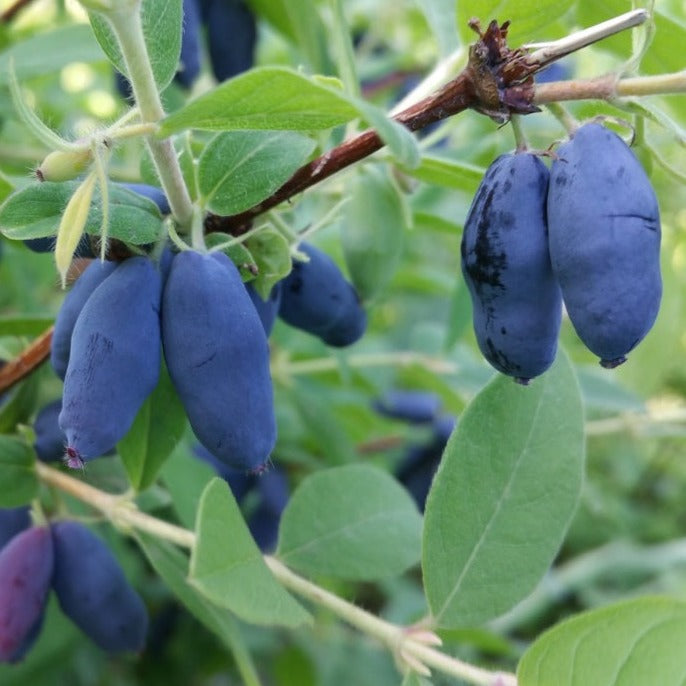The American Fig Company
Keiko Honeyberry
Keiko Honeyberry
Couldn't load pickup availability
Welcome to the enchanting world of Keiko Honeyberry, a delightful addition to your garden that promises a harmonious blend of sweetness and tanginess in its delectable berries. Known scientifically as Lonicera caerulea 'Keiko,' this exceptional fruit-bearing shrub is renowned for its exceptional cold hardiness, making it a favored choice for gardeners in colder regions, withstanding harsh winter temperatures down to USDA Zone 2. The Keiko Honeyberry not only tantalizes your taste buds with its unique flavor but also captivates your senses with its lovely bell-shaped flowers in spring, transforming into clusters of succulent blueberries, creating a visual feast that complements any landscape or garden.
Latin Name: Lonicera caerulea var. edulis
Site and Soil: prefer full sun to partial shade and well-drained soil. They can tolerate a wide range of soil types, including sandy, loamy, and clay soils, but prefer slightly acidic soils with a pH between 5.0 and 7.0.
Pollination Requirements: are self-fertile, but will produce higher yields if planted with a different cultivar for cross-pollination.
Hardiness: are hardy to USDA zone 2, withstanding temperatures as low as -50°F. They require a certain amount of winter chill to set fruit, and will not produce well in areas with mild winters.
Bearing Age: can begin bearing fruit 1-2 years after planting, but will reach full production at around 4 years.
Size at Maturity: typically grow to be 4-6 feet tall and wide, but can reach up to 8 feet with age. Pruning can help control their size and shape.
Bloom Time: produce small, white or pinkish flowers in early spring before the leaves emerge. The flowers are not showy but are important for fruit production.
Ripening Time: ripen in late June to early July, about a month before blueberries.
Yield: can produce 7-10 pounds of fruit per plant at full maturity, with higher yields when planted with a different cultivar for cross-pollination.
Pests & Diseases: are generally pest and disease resistant, but can be susceptible to fungal diseases in wet conditions. Birds may also eat the fruit, so protective netting may be necessary.
USDA Zone: 2-7. can tolerate a wide range of climates, but require a certain amount of winter chill to set fruit. In warmer areas, they may not produce well or at all.
Share

Featured Review
"Great! Great! Great! Great! Great!"
✰✰✰✰✰
- JARREN -
